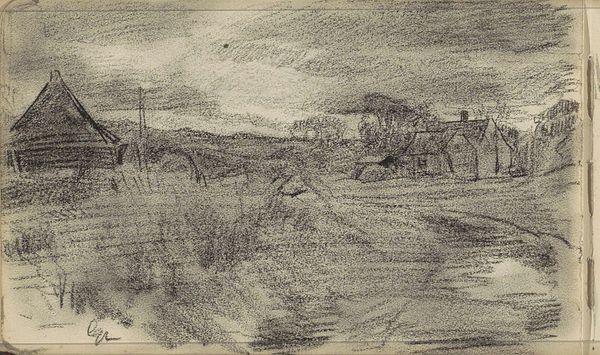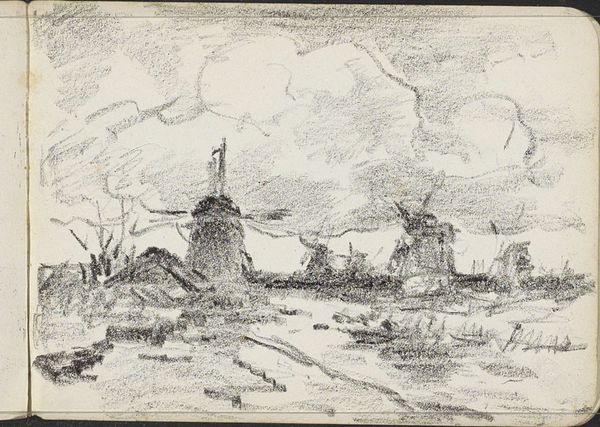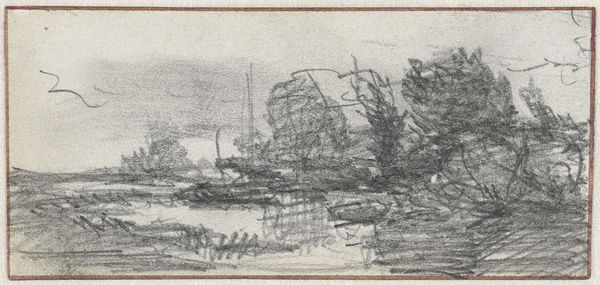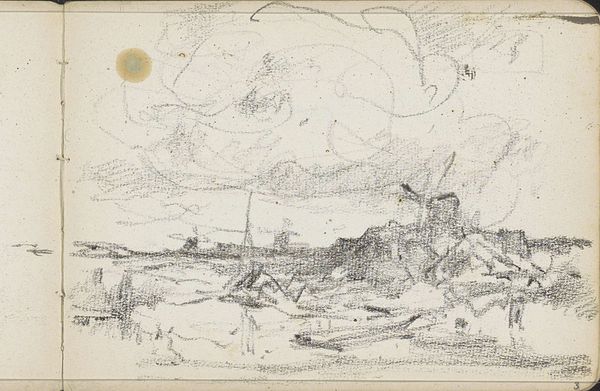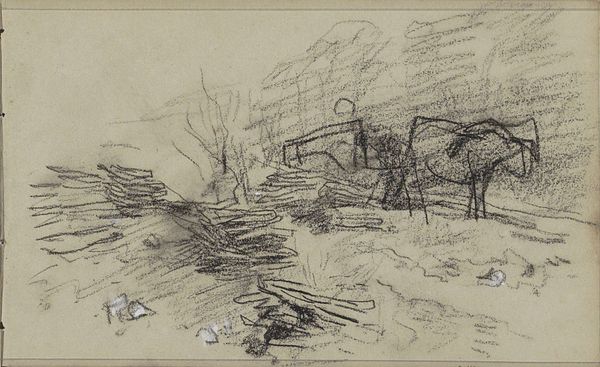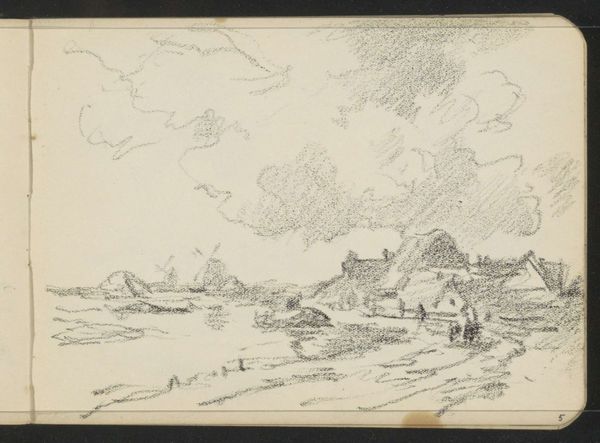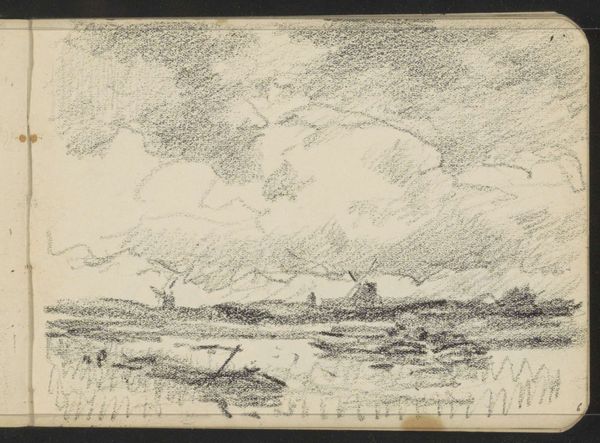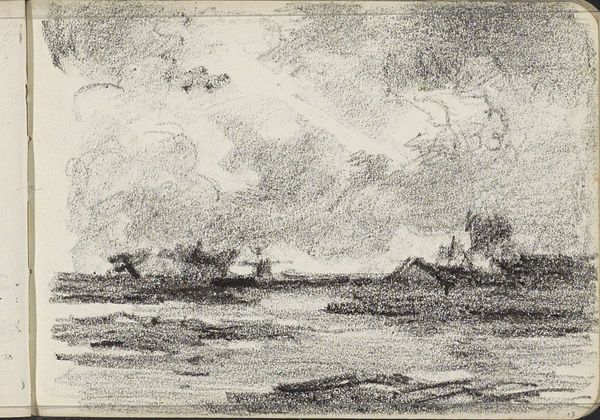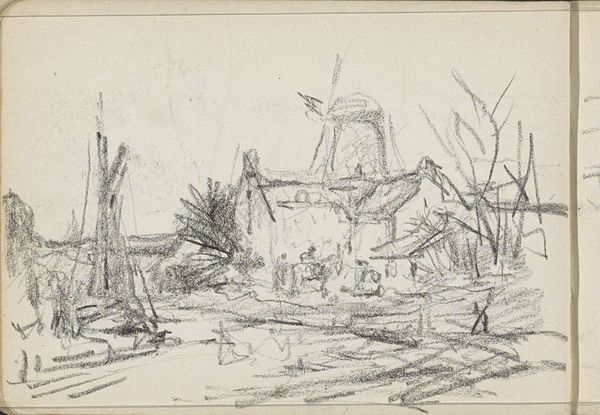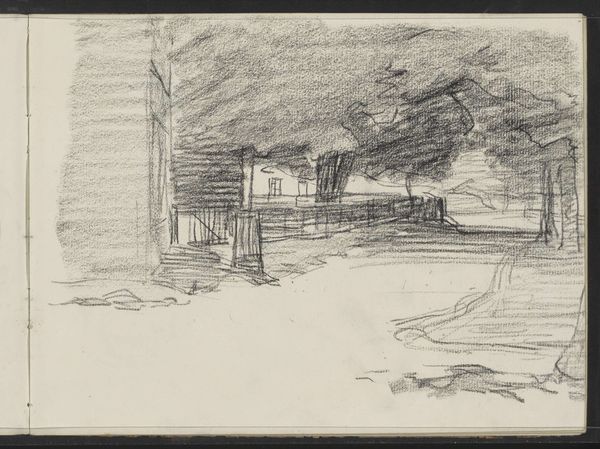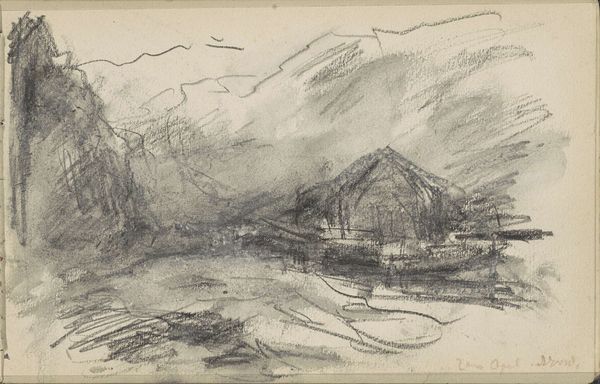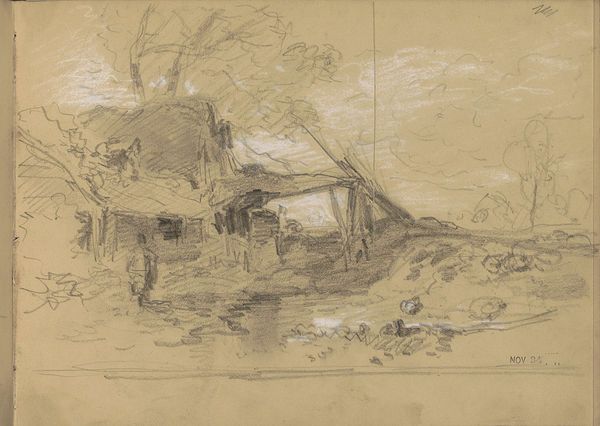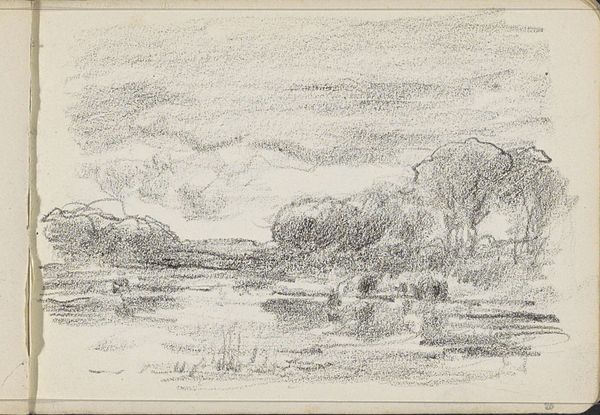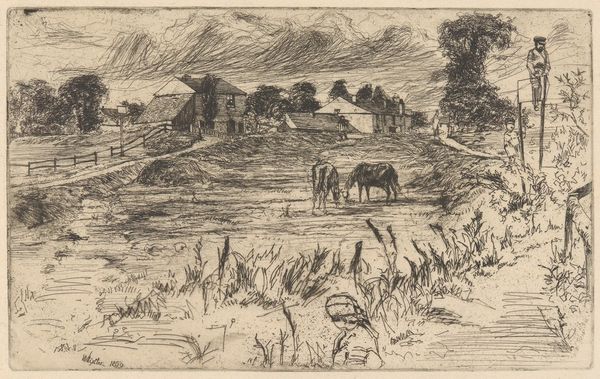
drawing, dry-media
#
drawing
#
landscape
#
dry-media
#
realism
Dimensions: height 114 mm, width 159 mm
Copyright: Rijks Museum: Open Domain
Editor: So, here we have Willem Cornelis Rip's "House in a Landscape," created in 1907 using dry media. It feels kind of stark and isolated, just a house beneath this heavy sky. What do you see in this piece, and how does it connect to its time? Curator: The image evokes a powerful sense of place and memory. Notice the looming sky, heavy with implied narrative. In psychological terms, we might see the house as a symbol of the self, vulnerable under the weight of societal or personal pressures—represented by the dominating sky. Do you find it to be in conflict or harmony with the landscape? Editor: That’s a fascinating perspective. I initially saw it as quite bleak, almost oppressive. But considering the symbolism, perhaps there's a sense of resilience too. The house is still standing, right? Curator: Precisely. And think about the act of drawing itself. In 1907, the rapid industrialization might lead artists back to these quieter, rural scenes, encoding a longing for simpler times, an appeal to national identity or stability during an era of great change. Editor: I never considered that contrast with industrialization. That tension between progress and tradition makes a lot of sense. Curator: Consider also how the artist renders the home’s roofline, firm, but in clear juxtaposition to the transience and movement of the sky. Are the symbols stable or unstable? How do they interact with the viewer's sense of emotional connection? Editor: It feels a lot less simple now! All those details contribute to this complex sense of place and feeling. Curator: Yes, by examining such pieces closely, we glimpse cultural anxieties and enduring human desires, subtly embedded in these scenes. Editor: It definitely changed my perception, it is a lot more layered than I first thought. Thanks for sharing your perspective!
Comments
No comments
Be the first to comment and join the conversation on the ultimate creative platform.
